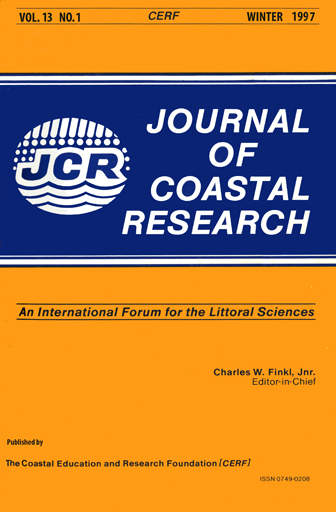Flow and Sediment Transport in a Shallow Bar-Built Estuary, Northern Gulf of Mexico
Keywords:
Control sediments, bay bar, tides, bayou mouth barAbstract
A field experiment was undertaken in Lake Barre, a shallow estuary within the Louisiana coastal zone, in November 1991 with the primary goal of acquiring a better understanding of time-mean flow and sediment transport in a shallow Louisiana bay on the periphery of a deteriorating marsh. A network of four monitoring stations recorded current velocity and water turbidity at various levels within the water column while water level, wave, salinity, and wind speed and direction data were acquired at a single station. Results show a response of the water column and the seabed to winds, waves, and tides during the period of study. Variations in velocity profiles, roughness lengths, and to a lesser extent, friction velocities suggest the existence of at least two distinct flow regimes during the periods of study that encompassed four cold fronts, One, characterized by small roughness and weak vertical velocity shear, occurred near the time of cold front passages when winds were northerly. The other, identified by large and frequently variable roughness and vertical velocity shear distributed uniformly through the water column, was predominately associated with tidal flows. The former was attributed to current ripples while the latter appeared to be related to the activity of benthic organisms. A large positive vertical sediment gradient that appeared during the first cold front was attributed to advection of sediment from an area of rapid degradation upstream. Sediment transport calculations reveal fluxes of sediment from the marsh into the study area during cold front passages, the largest magnitudes associated with the earliest cold fronts. Flux magnitude generally decreased with each succeeding cold front. Quantities of fine-grained sediment moving landward during strong prefrontal events are available for nourishing the marsh and contributes material for upward building of a bayou mouth bar. However, long-term subsidence rates are sufficient to mask the effects of deposition. Because much of the sedimentary material within Lake Barre is of sand-size, the bar is armored against the effects of subsequent storms from either direction.


